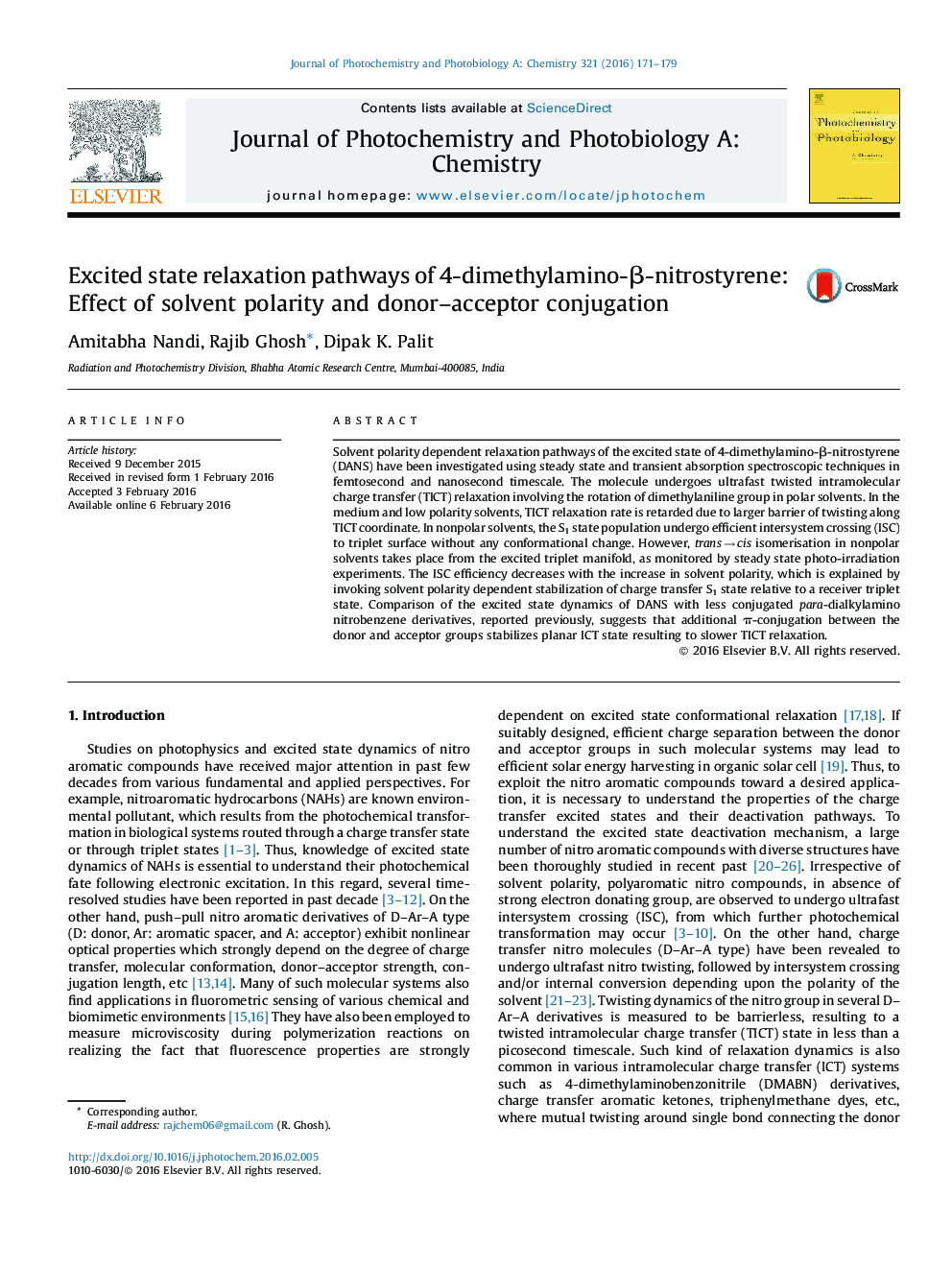| کد مقاله | کد نشریه | سال انتشار | مقاله انگلیسی | نسخه تمام متن |
|---|---|---|---|---|
| 26265 | 43943 | 2016 | 9 صفحه PDF | دانلود رایگان |

• The fluorescence yield of the molecule is highly solvent polarity dependent.
• Ultrafast studies revealed the mechanism of excited state deactivation and solvent polarity dependence.
• In nonpolar solvents, the S1 state deactivates through triplet state
• In polar solvents, the TICT relaxation around dimethylaniline and nitroethylene group occurs in 600 fs timescale.
• cis ↔ trans isomerization in nonpolar solvents occurs from triplet state.
Solvent polarity dependent relaxation pathways of the excited state of 4-dimethylamino-β-nitrostyrene (DANS) have been investigated using steady state and transient absorption spectroscopic techniques in femtosecond and nanosecond timescale. The molecule undergoes ultrafast twisted intramolecular charge transfer (TICT) relaxation involving the rotation of dimethylaniline group in polar solvents. In the medium and low polarity solvents, TICT relaxation rate is retarded due to larger barrier of twisting along TICT coordinate. In nonpolar solvents, the S1 state population undergo efficient intersystem crossing (ISC) to triplet surface without any conformational change. However, trans → cis isomerisation in nonpolar solvents takes place from the excited triplet manifold, as monitored by steady state photo-irradiation experiments. The ISC efficiency decreases with the increase in solvent polarity, which is explained by invoking solvent polarity dependent stabilization of charge transfer S1 state relative to a receiver triplet state. Comparison of the excited state dynamics of DANS with less conjugated para-dialkylamino nitrobenzene derivatives, reported previously, suggests that additional π-conjugation between the donor and acceptor groups stabilizes planar ICT state resulting to slower TICT relaxation.
Figure optionsDownload as PowerPoint slide
Journal: Journal of Photochemistry and Photobiology A: Chemistry - Volume 321, 1 May 2016, Pages 171–179